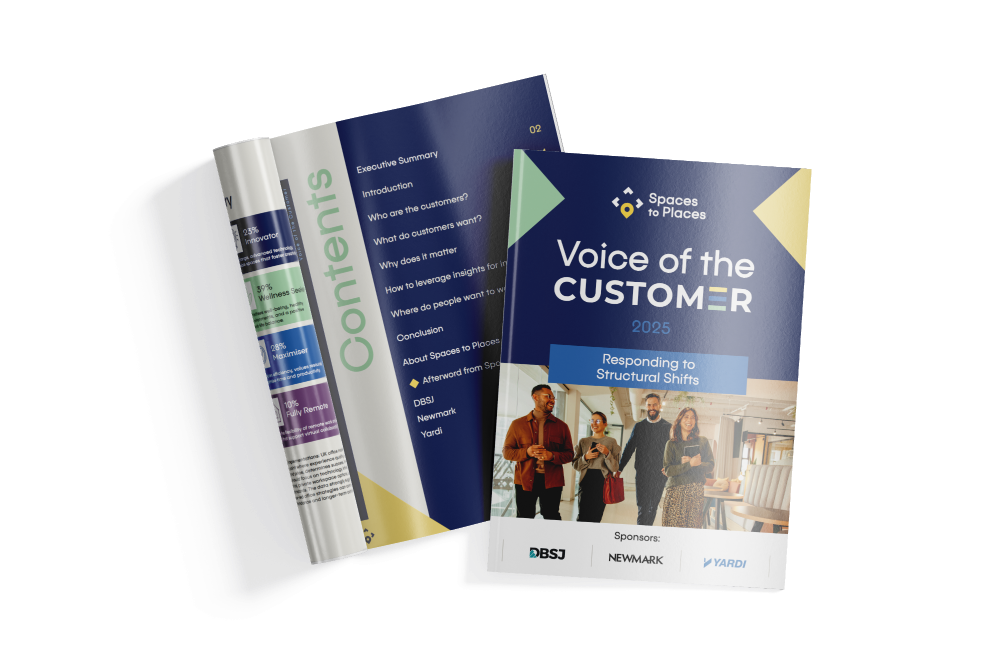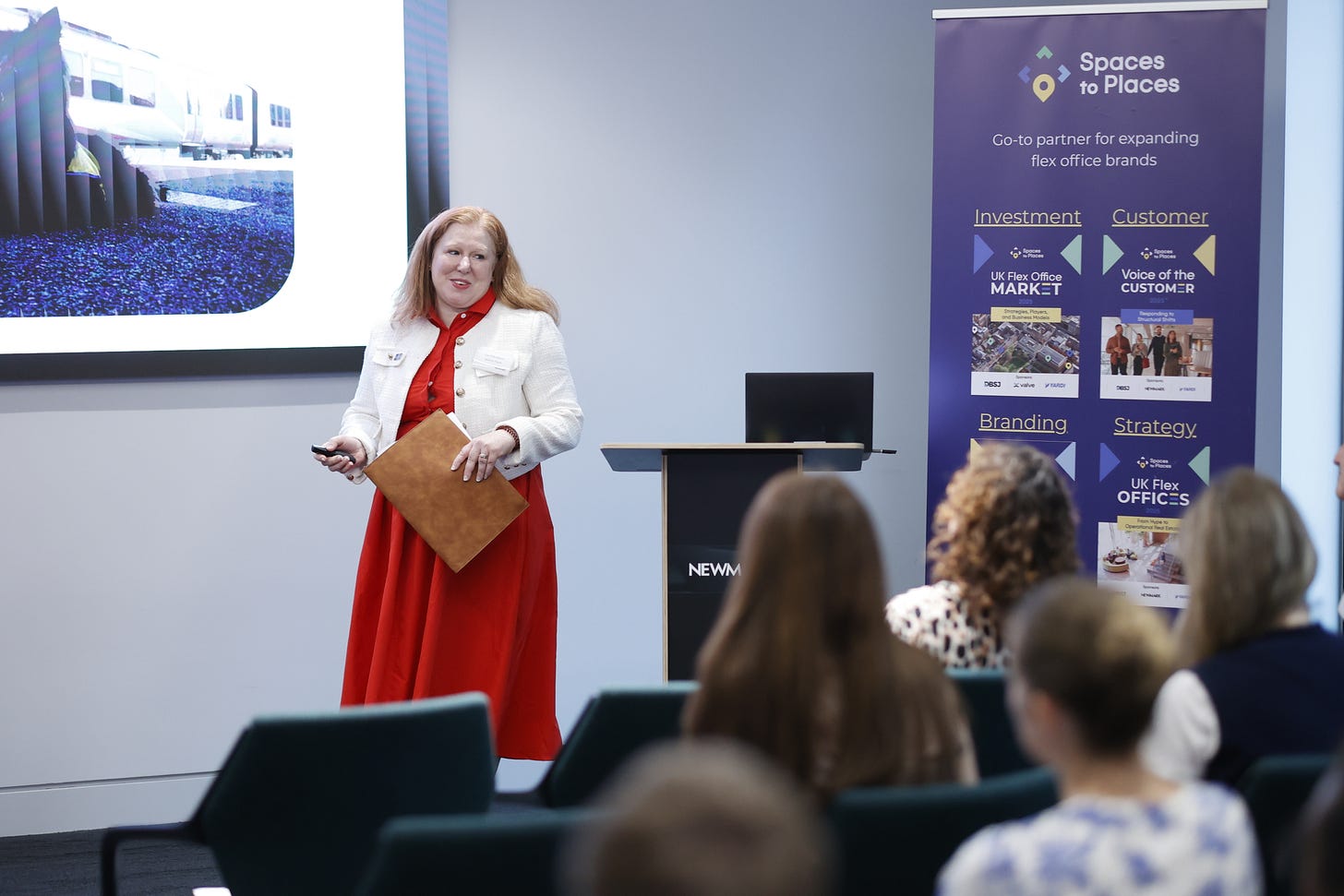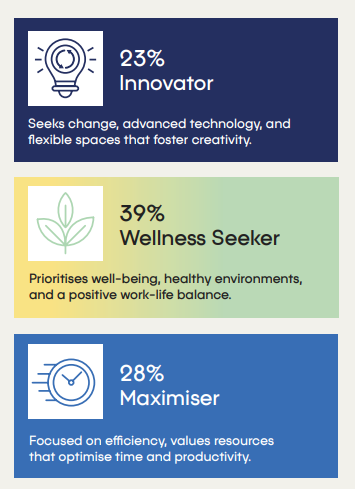The Death of the Worker Bee: Why 71% of Office Workers Are Telling Us We've Got It All Wrong
7 in 10 UK workers say they would come in more often if the office experience worked for them, not against them.
“71% of UK workers would increase their office attendance
if workplaces delivered ideal experiences”
-Voice of the Customer 2025
Read that again.
Seven in ten people aren’t avoiding offices because they love working from home.
They’re avoiding bad office experiences.
Yet the office industry continues to debate desk ratios, mandate return-to-office policies, and blame the “lazy workers” narrative for empty buildings.
We’ve been asking the wrong question.
Instead of “How do we get people back?” we should be asking “Why did they leave in the first place?”
Our latest Voice of the Customer research gives us the answer, and it’s not what most operators want to hear.

The Worker Bee Mythology Is Dead
Before COVID, office work operated on a simple premise:
workers were interchangeable units who showed up because they had to. Like bees in a hive, they assembled and got on with it.
That world is gone forever.
The pandemic didn’t just change where people work; it fundamentally altered their relationship with work itself. There was “this huge awakening of the sense of self”.
Workers started asking: Who am I? What’s my status? Why am I working with these people?
People became mission-led instead of location-led.
The office industry is still designing for worker bees when it should be designing for individuals with complex psychological needs. That’s why 80% of operators think they deliver superior service while only 20% of customers agree (Voice of the Customer 2025).
We’re no longer speaking the same language.
The 60 to 70 Percent Tipping Point That Changes Everything

Here’s what the industry gets wrong about office attendance:
it’s not about individual choice.
It’s about collective momentum.
Our research revealed that when 60 to 70 percent of team members are present, approximately 90 percent find significant value in attending (Voice of the Customer 2025).
Below that threshold, workers question why they’re there.
Above it, Fear of Missing Out drives voluntary attendance.
“The office becomes magnetic instead of mandated.”
This isn’t about forced collaboration or open-plan orthodoxies, it’s about creating conditions where people choose to be together because they’re getting something they can’t get elsewhere.
“You cannot policy your way to presence; you must earn it with experience.”
Three People, Not One “Worker”
The biggest revelation from our research?
There is no average office worker.
There are three distinct types, each with different motivations:
Wellness Seekers (39%)
They want work-life balance and currently attend least.
But 69% would increase attendance for the right experience. They’re not lazy, they’re selective.Innovators (23%)
Tech-savvy professionals seeking networking and advancement.
77% would increase attendance significantly for environments that accelerate their careers.Maximisers (28%)
Efficiency-focused individuals who value productivity optimisation.
Half would attend more for superior operational environments.
Designing one space for three different psychological profiles is akin to writing one song for three distinct genres.
It doesn’t work.
The Technology Paradox Nobody Talks About

Here’s the industry’s dirty secret: most office technology is terrible.
One operator shared how they spent years developing a building app, only to discover the main reason people used it was for access control. Remove that dependency, and usage plummeted.
The lesson?
People expect an Instagram-level user experience in every app.
When your building technology feels clunky compared to TikTok, workers notice.
But here’s the twist: that same operator replaced their failed app budget with chocolate. 2.2 metric tons of it.
Sometimes the simplest solutions create the biggest impact. While everyone chases smart building technology, a chocolate bar waiting at your desk might deliver more genuine satisfaction than any app ever will.
Bottom-Up Decisions Are the New Normal
The old model was simple:
The MD and FD toured a few buildings and made a decision.
That’s finished.
Now we’re seeing five or six team members involved in the office selection process. Employees tour the spaces first and report back to decision-makers. The process has become more democratic than autocratic.
Workers are no longer passengers in workplace decisions, they’re drivers.
This shift terrifies traditional operators who built businesses around convincing two senior executives rather than engaging entire teams.
But it’s exactly why the 71 percent statistic matters:
you’re not selling to decision makers anymore, you’re selling to actual users.
What Workers Actually Want
Forget the ping-pong tables and beer taps.
The top three workplace requirements are brutally practical:
High-speed internet (47%)
Printing services (38%)
Private offices (35%)
The open-plan collaboration orthodoxy is dead.
Workers rejected the hive mentality in favour of individual control and privacy. They want technology that works flawlessly and spaces that let them choose how to work.
The Service Perception Crisis
80 percent of operators believe they deliver superior service.
20 percent of customers agree (Voice of the Customer 2025).
This isn’t a marketing problem. It’s a reality problem.
For too long, the industry has measured success through landlord-friendly metrics:
Occupancy rates
Lease lengths
Cost per square foot
Meanwhile, workers judge success through completely different criteria:
Does this space make me more productive?
Does it enhance my life?
Does it respect my time?
We’ve been optimising for the wrong scorecard.
The Choice Facing Every Operator
Continue designing for imaginary worker bees who show up because they have to...
Or
Start designing for real people who choose where they work based on the quality of the experience.
The 71 percent statistic isn’t just about demand, it’s about potential.
It represents millions of workers who are open to better office experiences but can’t find them.
They’re not asking for revolutionary changes.
They want reliable technology, functional amenities, and spaces that treat them like individuals rather than interchangeable units.
The future belongs to operators who understand that people don’t want to be managed; they want to be served.
The worker bee is dead. The individual is everything.
Are you ready to design for humans, not hives?
Spaces to Places presented the Voice of the Customer 2025 report at a London Launch Event (Tap here for photos)





